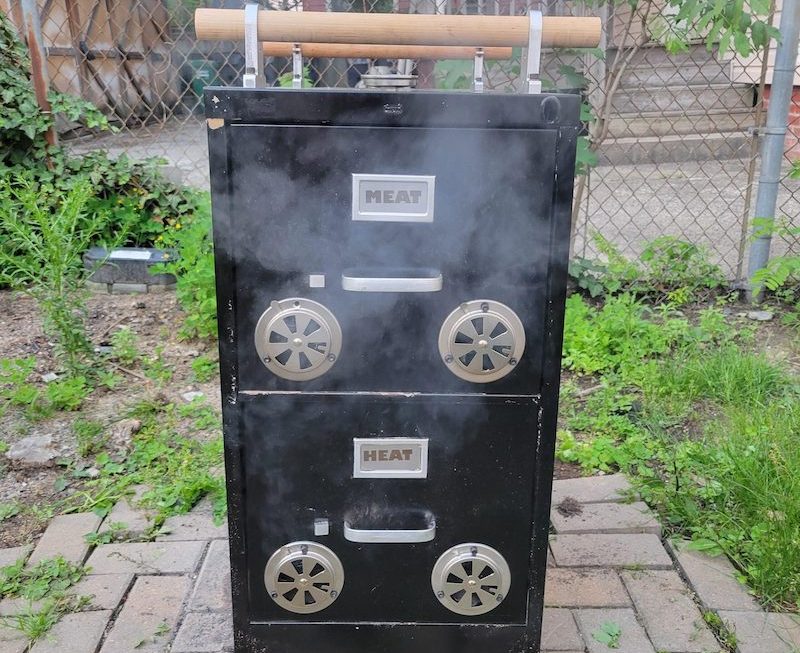Introduction to Cabinet Vision Software
Cabinet Vision is a powerful tool for kitchen and bath designers. It offers detailed solutions for designing, rendering, and manufacturing. Cabinet makers use it to streamline their workflows and maximize efficiency. Precision in design and enhanced automation are core to Cabinet Vision.
Key Features and Benefits
Cabinet Vision comes with numerous features that boost productivity. Its user-friendly interface allows quick learning for new users. It has drag-and-drop capabilities which make design assembly fast. The software also provides accurate costing, which helps in pricing projects right. Automated CNC outputs reduce the chance of human error. One of the key benefits is its 3D rendering capability. This feature helps clients visualize the final product. Advanced customizations are possible within the software. They cater to unique project demands seamlessly. Overall, Cabinet Vision saves time and cuts down on waste materials. This makes it an essential tool for those in the cabinetry field.
Setting Up Your Workspace
Creating an effective workspace in Cabinet Vision is crucial for maximizing productivity. An organized environment minimizes distractions and streamlines the design process. To achieve this, you should customize the user interface according to your workflow. Arrange toolbars and menus for easy access to frequently used functions.
Optimal Configuration for Productivity
For optimal configuration, consider the following steps:
- Centralize Essential Tools: Group essential design tools in a central location on your screen. This reduces the need for excessive mouse movement and saves time.
- Create Custom Tool Palettes: Set up custom tool palettes that fit the types of projects you frequently work on. By doing this, you can quickly select the tools you need without searching through menus.
- Utilize Keyboard Shortcuts: Learn and use Cabinet Vision’s keyboard shortcuts. These shortcuts speed up common actions like copying and pasting elements or switching between views.
- Save Your Workspace Layouts: If you work on different types of projects, save multiple workspace layouts. This way, you can switch between setups tailored for specific tasks.
- Organize Layer Management: Properly manage layers to keep track of various components. Use naming conventions and color-coding to identify different elements easily.
Implementing these steps can significantly enhance your efficiency. It allows for a smoother design process and faster transition from concept to production. Keep refining your workspace setup to align with evolving project requirements. Always ensure that you are using Cabinet Vision to its fullest potential to maintain a competitive edge.
Design Tips for Faster Execution
In the realm of cabinet design, efficiency isn’t just about working harder; it’s about working smarter. The successful use of Cabinet Vision can hinge on how well you incorporate speed-oriented strategies into your design process. Here are some impactful design tips to ensure faster execution of your projects:
- Pre-define Common Assemblies: Save time by pre-creating assemblies you use frequently. This allows for quick insertion into projects without rebuilding from scratch.
- Use Templates for Similar Projects: Develop templates for projects with similar dimensions or styles. Adjusting a template is often much quicker than starting anew each time.
- Optimize Default Settings: Adjust the default settings in Cabinet Vision to suit the majority of your work. This means less tweaking for each project.
- Implement Batch Operations: When possible, use batch operations to perform actions on multiple items at once, such as modifying attributes or applying finishes.
- Stay Updated with Software Versions: Keep your Cabinet Vision updated. Newer versions often come with features that can speed up your design process.
Utilizing Automation for Repetitive Tasks
Cabinet Vision’s automation tools are a game-changer for increasing speed and reducing tedious work. Implementing these tools can significantly cut down on the time spent on repetitive tasks:
- Smart Tooling: Utilize Cabinet Vision’s smart tools to automatically adjust dimensions and joinery based on design rules you set.
- Auto-Cataloging: Set up an auto-catalog that can place hardware and materials automatically, according to the design.
- Parameter-Based Models: Create parameter-based models to quickly modify cabinet sizes, door styles, and more with ease.
- Scripting for Custom Actions: Use scripting within Cabinet Vision to automate complex or repetitive design steps that cannot be covered by the default functionality.
- Scheduled Updates and Backups: Automate backups and software updates to occur during off-hours, so they don’t interrupt your design process.
By integrating these automation strategies into your workflow, you position yourself to achieve faster execution on every project, giving you an edge in meeting deadlines and satisfying clients.
Material and Hardware Integration
Incorporating materials and hardware into your Cabinet Vision designs is pivotal. This step ensures that the final product is not only aesthetically pleasing but also functional. Efficient material and hardware integration can lead to reduced costs and increased client satisfaction.
Streamlining Selection and Specification Processes
To streamline the selection and specification process in Cabinet Vision, follow these guidelines:
- Catalog Management: Manage your material and hardware catalogs systematically. Keep them updated with current offerings and prices.
- Supplier Integration: Work closely with suppliers to integrate their catalogs directly into Cabinet Vision. This ensures real-time access to materials and hardware options.
- Standardization of Components: Where possible, standardize components across designs. This simplifies the specification process and streamlines inventory management.
- Use of Filters: Employ filters in Cabinet Vision for quick sorting of materials and hardware based on specific criteria like color, material type, or supplier.
- Favorites List: Create a favorites list for frequently used items. This saves time during the design phase and ensures consistency in your projects.
These steps help to maintain a seamless workflow. They allow designers to quickly pick materials and hardware that match their design vision, while maintaining cost efficiency and quality standards.
Advanced Drawing and Visualization Techniques
In the competitive field of cabinetry design, advanced drawing and visualization techniques set professionals apart. Cabinet Vision software, with its robust features, supports these high-end processes effectively. Mastering these techniques can vastly improve the presentation of your designs, making them more attractive to clients.
Achieving Realistic Rendering and Simulations
To achieve realistic rendering and simulations, follow these tips using Cabinet Vision:
- Leverage High-Quality Textures: Use high-resolution textures for materials like wood and metal. This adds realism to your designs.
- Utilize Lighting Effects: Appropriate lighting can enhance the appearance of your models. Experiment with different lighting settings to mimic natural light or to highlight specific areas.
- Refine Camera Angles: Choose camera angles that showcase the most important elements of your design. A well-placed camera can make a significant difference in how a design is perceived.
- Employ 3D Modeling Techniques: Use detailed 3D modeling to create precise and realistic components. This helps clients understand the spatial relationships in the design.
- Simulation Tests: Run simulation tests to see how your design functions in a virtual environment. This can help identify any practical issues before construction begins.
Implementing these strategies within Cabinet Vision will not only enhance the aesthetic appeal of your designs but also increase overall client satisfaction by providing them with a clearer, more detailed visual representation of the final product.
Error Checking and Correction in Designs
Cabinet Vision excels not only in design creation but also in ensuring accuracy. Error checking is vital to prevent costly mistakes. It helps identify flaws before production begins. Addressing errors at the design stage saves time and resources.
Preventing Common Mistakes
In Cabinet Vision, preventing common mistakes involves careful attention to detail. Follow these key practices:
- Consistent Dimension Checks: Always verify dimensions. This catches size errors early on.
- Component Compatibility Review: Ensure components fit together. Review their compatibility to avoid assembly issues.
- Automatic Collision Detection: Use Cabinet Vision’s collision detection. It flags intersecting elements before they become problems.
- Parameter Validation: Double-check parameters set for materials and hardware. Validate them against your design requirements.
- Regular Review Cycles: Implement a routine for regular design reviews. This helps spot errors that may have been overlooked.
By incorporating these error-checking practices, designers can significantly reduce the risk of errors slipping through to the manufacturing phase. Diligent application of these steps in Cabinet Vision ensures not just aesthetically pleasing, but also structurally reliable and functional cabinetry.
Collaboration and Sharing of Cabinet Designs
Working with a team or gaining client approvals is easier with effective collaboration in Cabinet Vision. Sharing designs and getting feedback is crucial to finalizing projects successfully. This is where Cabinet Vision’s collaborative features shine.
Tools for Teamwork and Client Approvals
When it comes to collaboration, Cabinet Vision provides tools that facilitate clear communication:
- Shared Views and Comments: Cabinet Vision allows you to share design views with team members and clients. Stakeholders can add comments directly on the shared views, making it easy to collect and understand feedback.
- Cloud-Based Sharing: Utilize Cabinet Vision’s cloud capabilities for sharing projects. With secure online access, team members can work from various locations, ensuring constant progress.
- Design Revisions Tracking: Keep track of all the design revisions. Cabinet Vision enables version control which helps in reviewing changes and ensuring that everyone is on the same page.
- Approval Workflows: Set up approval workflows within the software. This makes sure every design step gets the necessary sign-offs before moving to the next stage.
- Integration with Communication Tools: Integrate Cabinet Vision with external communication tools if necessary. This aids in keeping all project-related discussions in sync with the design process.
Optimizing the techniques to share, review, and approve cabinet designs enhances teamwork and customer satisfaction. It speeds up the decision-making process and avoids unnecessary delays caused by miscommunication. Leveraging these tools is a big step towards efficient cabinet project execution.
Concluding Thoughts
In wrapping up, the efficient design and execution with Cabinet Vision software hinge on strategic approaches and best practices. By leveraging the powerful tools and features the software offers, you can significantly enhance your productivity and ensure high-quality results for your clients.
Recap of Best Practices
To summarize the essential strategies for efficient cabinet design using Cabinet Vision:
- Customize your workspace for optimal productivity, with central tool locations and keyboard shortcuts.
- Save time with pre-defined assemblies, use of templates, and optimizing default settings.
- Explore automation for repetitive tasks, using smart tooling and parameter-based models.
- Systematically manage material and hardware selections, streamlining your process with supplier integration and standardized components.
- Employ advanced drawing techniques for realistic renderings and simulations, improving client presentation.
- Make error checking routine, using consistent dimension checks and collision detection features.
- Take advantage of collaboration tools such as shared views, cloud-sharing, and design revision tracking.
By adopting these techniques and continually refining your approach, you’ll maintain quality, speed, and reliability in all your cabinet design projects, securing a competitive edge in the market. Consistent use of Cabinet Vision’s capabilities allows you to meet the evolving demands of your clients with confidence and precision. Remember, success in this field combines creativity with efficiency, and with Cabinet Vision, you’re well-equipped to excel in both.






